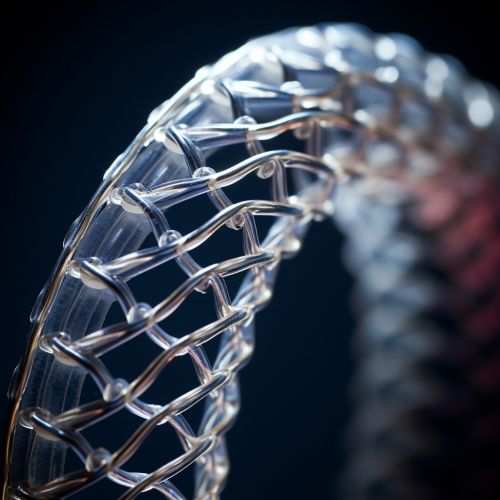Esophageal Stents
Introduction
Esophageal stents are tubular devices made of metal or plastic, designed to keep the esophagus open when a blockage or narrowing (stricture) prevents normal swallowing. They are often used in the management of esophageal cancer, benign esophageal strictures, and other conditions such as esophageal perforations and fistulas.


History
The use of esophageal stents dates back to the late 19th century when they were first used to manage esophageal strictures. Over the years, the design and materials used in stents have evolved significantly, with the introduction of self-expanding metal stents (SEMS) in the 1990s marking a significant advancement in stent technology.
Types of Esophageal Stents
There are three main types of esophageal stents: plastic stents, self-expanding metal stents (SEMS), and self-expanding plastic stents (SEPS). Each type has its own advantages and disadvantages, and the choice of stent depends on the patient's condition and the physician's preference.
Plastic Stents
Plastic stents are made from medical-grade plastic and are typically used for short-term treatment of benign esophageal strictures. They are less expensive than metal stents but are more likely to cause complications such as migration and occlusion.
Self-Expanding Metal Stents (SEMS)
SEMS are made from a metal mesh that expands after placement in the esophagus. They are more durable and less likely to migrate than plastic stents, making them suitable for long-term treatment of malignant esophageal strictures.
Self-Expanding Plastic Stents (SEPS)
SEPS are a newer type of stent made from a plastic material that expands after placement in the esophagus. They combine the advantages of plastic and metal stents, offering durability and low risk of migration.
Indications and Contraindications
Esophageal stents are used in a variety of conditions, including esophageal cancer, benign esophageal strictures, esophageal perforations, and esophageal fistulas. They are also used in palliative care to improve the quality of life for patients with advanced esophageal cancer.
Contraindications for esophageal stent placement include severe esophageal inflammation, uncontrolled coagulopathy, and inability to tolerate endoscopic procedures.
Procedure
The placement of an esophageal stent is typically performed under sedation using endoscopic guidance. The stent is inserted through the mouth and guided into place in the esophagus using a combination of fluoroscopy and endoscopy.
Complications
While esophageal stent placement is generally safe, complications can occur. These include stent migration, esophageal perforation, bleeding, infection, and stent occlusion.
Future Directions
Advancements in stent technology continue to improve the safety and efficacy of esophageal stent placement. Future developments may include bioabsorbable stents, drug-eluting stents, and stents with improved designs to reduce complications.
